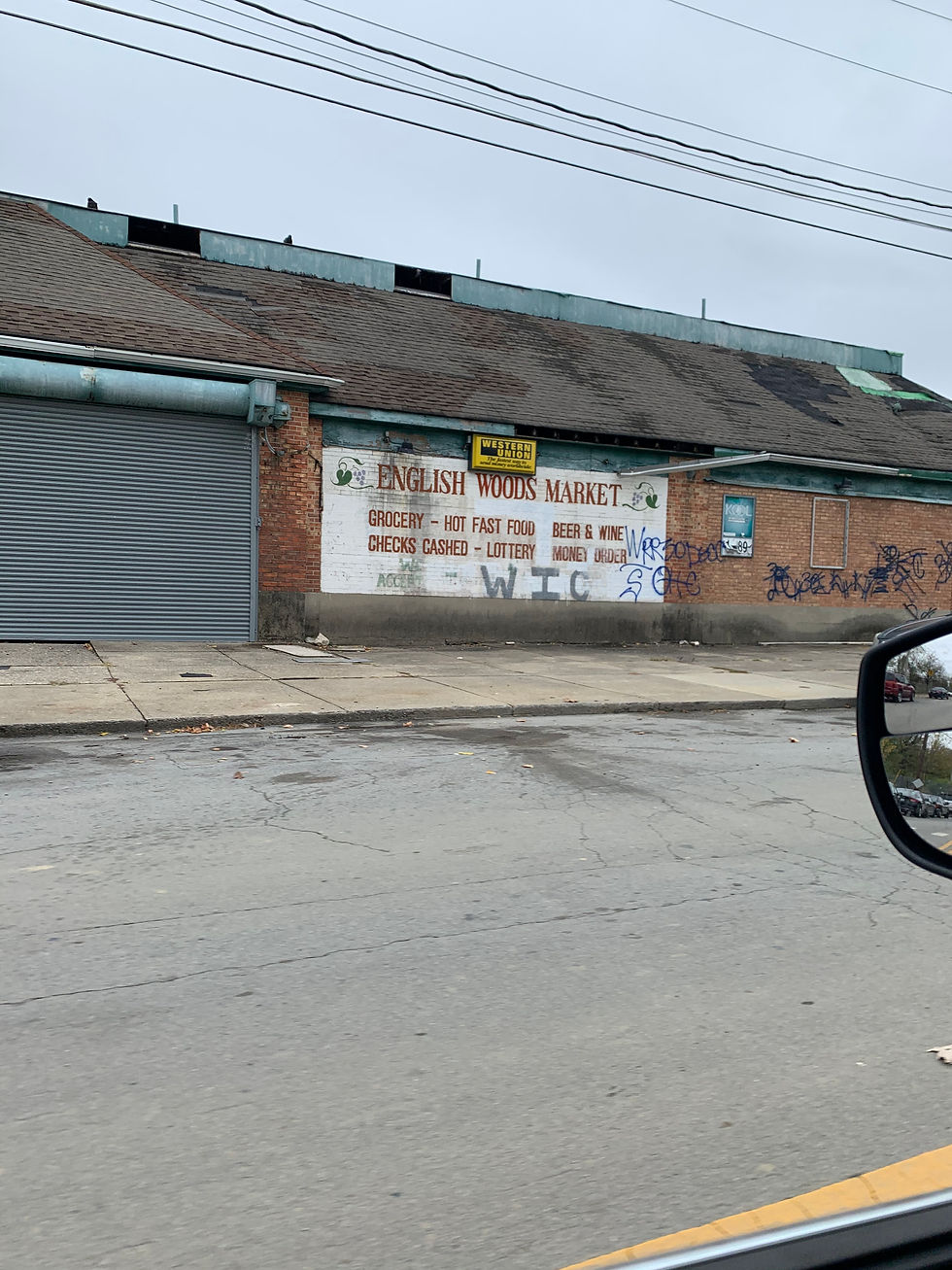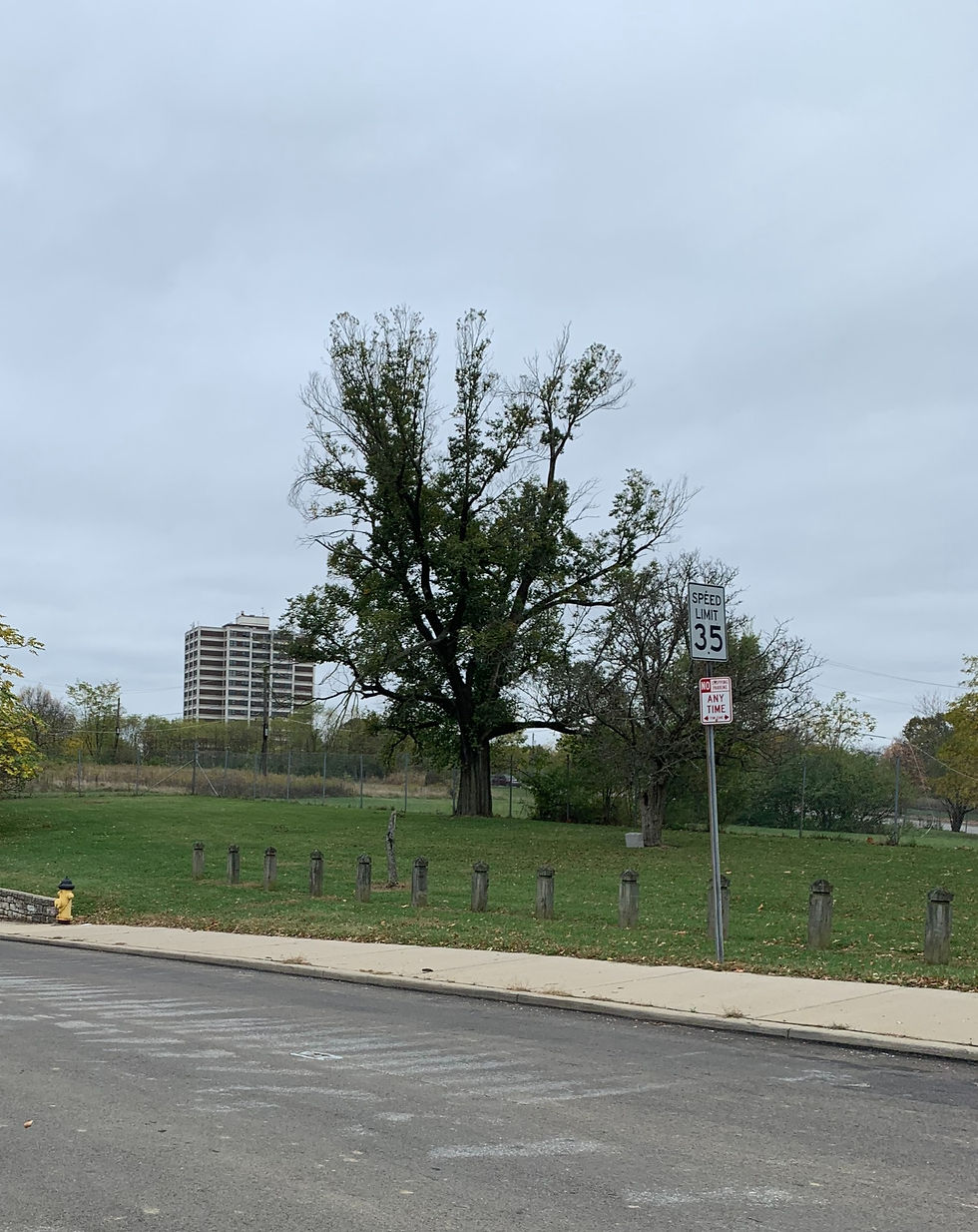English Woods and Millvale
- Anthony Gustely

- Nov 1, 2020
- 4 min read

It's week 8 of 52 First Impressions and I had what would be my quickest neighborhood visit to the small communities English Woods and Millvale. Sitting at 2,399 residents and just about a quarter mile in area, Millvale is the 33rd largest of 52 neighborhoods in Cincinnati. Even smaller (and more desolate), English Woods is the 2nd smallest neighborhood in the City, housing only 405 residents (most of which live in a singular housing tower. In combination with their small population and land area, Millvale and English Woods contain no activities (a generic term City Planning use to describe any sort of commercial or recreational opportunity).
Millvale



Millvale is home to 2,400 people, nearly all of them black. The median household income is $15,543 ... Unemployment in the neighborhood stands at 27 percent; poverty, at 57 percent ... One-third of the neighborhood is public housing. Kids in Millvale see and hear violence that kids in other neighborhoods don't. - "This school is stepping up for Cincinnati's poorest kids", WCPO
Ethel M. Taylor Academy, a CPS elementary school, serves as a community node for the neighborhood. Bordered by the Mill Creek to the East and Westwood Northern Boulevard to the South. The school provides free breakfast and lunch for its students, and the Millvale Recreation Center (run by Cincinnati Recreation Commission) serves free dinners. Most of the neighborhood is comprised of residential housing, and the neighborhood is surrounded by industrial land use (especially to the east). The combination of primarily residential use and small land area leaves Millvale with a small tax base to support its population.
As I mentioned in my East Westwood and Villages at Roll Hill article, I volunteer with Bearcat Buddies through the University. Bearcat Buddies, a volunteer program that connects UC students with Cincinnati Public Schools students, brought me to Ethel M. Taylor Academy in 2018. I got to help out with Taylor's after school program once a week and hang out with some of the sweetest, funniest kids in the world. Similar to Roll Hill, many of the children at Taylor experience child poverty, often hungry and lacking basic needs like clean clothes and school supplies.
The neighborhoods that run along I-75 below I-74, including Millvale and English Woods, are all similar in their stories of divestment and neglect by the City of Cincinnati. I encourage you to check out this excerpt from my East Westwood and Villages at Roll Hill article, which details a through-line between neighborhoods immediately outside the urban core:
Let's discuss the concept of spatial segregation within Cincinnati. Most often talked about within the confines of where people live (and not where they work), spatial segregation refers to "the extent to which groups defined by racial, ethnic, or national origin live in different neighborhoods ... groups can [also] be residentially segregated on the basis of any ascribed or achieved characteristic (such as religion, family structure, or socioeconomic status) and at any level of geography (such as a residential block, a state or province, or a country region)."
Cincinnati remains spatially segregated by race as a product of redlining during the age suburbanization and automization in the early to mid 20th century. As new homes began to be built outside of city limits, banks would create maps revealing eligibility for home loans in these newly developed areas. Primarily minority communities were most often outlined in red, signaling a "high risk" lending status which was deemed ineligible for home loans. The result of redlining was spatial segregation: keeping African Americans who resided closer to downtown in their place and allowing for the "white flight" of caucasian families out to the periphery.
"Even though we can no longer legally redline, the impressions that redlining gave of which communities are desirable or not desirable still exist...Wealth is generational, so if you've robbed generation after generation of these communities of the wealth that they could have been building, those cumulative effects are still living." - UC Assistant Professor of Sociology Dr. Maliq Matthew

English Woods
English Woods is a particularly interesting microcosmic example of the failure of early government housing projects. Built in 1942, the 700 unit housing project stood for 65 years before being torn down in 2015. The residents of the two-story townhomes, made of brick, were primarily African American:
"Today, English Woods is a no-man’s land. The brick, townhome-style apartments were torn down more than 10 years ago. Old streets lead to nothing but tall grass and weeds. Much of the 50-acre site is fenced off. Discarded pop bottles, cigarette wrappers and other garbage accumulates." - "Our Forgotten Neighborhoods: English Woods", WCPO


Driving through English Woods was like driving through a ghost town. The overgrown and unmaintained site is a shell of what it once was. With approximately only 0.1% of Cincinnati's City population, most of the residents of English Woods live in a freestanding housing tower. The tower, run by the Cincinnati Metropolitan Housing Authority, provides 139 units of low-income senior housing. There are continuing talks to redevelop on the vacant land within the neighborhood: the CMHA wishes to build an "urban village" on the land. The $200 million dollar project's details are still murky, and the CMHA won't disclose the specific developers involved in the project (as of 2018).

Check out this article detailing the Beekman Street Corridor Initiative, a project that includes combined representation from several smaller neighborhoods including South Fairmount, North Fairmount, English Woods, Millvale, and South Cumminsville.

Similar in present condition, both English Woods and Millvale have suffered unfair treatment (or lack thereof) from the City. Similar to other small, low-income, and predominantly African American communities, the size of English Woods and Millvale (a spatial instrument set up BY the City) works against them when they come to the City asking officials to listen or allocate money/projects. Perhaps not as glaring as the former English Woods housing development, City Governments continue to fail these communities through utilizing an outdated structure of 52 neighborhoods. Keeping this structure unfairly benefits larger communities which have a mix of uses, higher (or more diverse) incomes, broader community voices, and increased leverage in project choice and allocation.
Thanks for reading. See you next week.





Comments